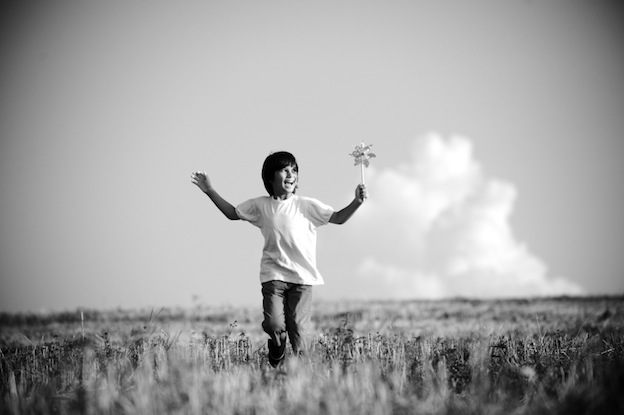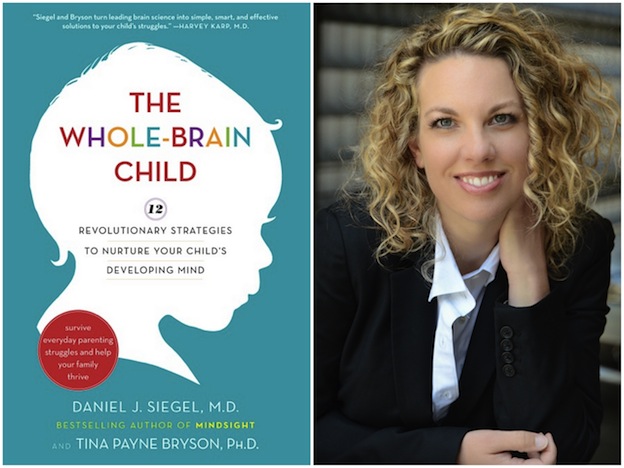SingaporeMotherhood | Baby & Toddler
July 2013
Calmer, Happier Children, the Whole-Brain Way

“The moments you are just trying to survive are actually opportunities to help your child thrive,” say Dr Tina Bryson and Dr Dan Siegel, authors of The Whole-Brain Child.
In their book, the authors explain how children’s brains are wired, and provide solutions on how to deal with them. Did you know, for instance, that your child’s “upstairs brain”, the one that controls decisions and emotions, does not fully develop until he is in his mid-twenties? With this in mind, the good doctors lay out 12 strategies that any parent can use to turn outbursts, tantrums, and arguments into calm, happy, learning moments.
Dr Tina Bryson, who is also a Psychotherapist at the Pediatric and Adolescent Psychology Associates and at the Center for Psychological Services in California, was here in June 2013 as part of the Singapore Innovative Children’s Festival, which was organised by Innovative Diagnostics and sponsored by Abbott Gain IQ. She took some time out to tell us more about the Whole-Brain Child concept.
[banner][/banner]
Do these techniques work with every age group?
The strategies in The Whole-Brain Child work on any age. In fact, if you have a brain, they work! They work really well on adults as well because they are based on how the brain works. At the end of the book there is a chart called “Ages and Stages” that specifically addresses how to apply each of the twelve strategies to every age group, from newborn through age 12.
What is a whole-brain child?
A whole-brain child essentially stems from cultivating an ‘integrated’ brain. When children have experiences that nurture all the parts of their brain, for example, honouring an emotional intelligence, as well as a logical, intellectual intelligence, the whole brain is developed. When this happens, the brain can be in integrated states more of the time, which leads to emotional and relational health, as well as being able to make good decisions to lead balanced and meaningful lives.
In line with the above, the book The Whole-Brain Child is really about helping parents to understand how the brain of a child is wired and how it matures, and providing practical strategies for parents to foster healthy mental and emotional development in their children.
The Whole-Brain approach gives parents strategies to help their child move from either chaotic or rigid states into adaptive, flexible, stable states. The strategies help parents survive the meltdown moments and help your children thrive as they develop.

How long does it take for a whole-brain child to develop? Should we develop ourselves as “whole-brain parents” first?
Dr Dan Siegel, my co-author, created the term ‘mindsight’, which means to see your own mind and the mind of others. It’s the ability to understand and have insight into our thoughts, feelings, beliefs, wishes, and motivations, and to be able to see things within another person as well.
When we help children see and understand their thoughts, feelings, and bodily sensations (like noticing that their jaw clenches when they are angry), and we help them see things from another person’s perspective, we build the upstairs brain and give them the ability to have meaningful relationships, and ultimately to be better parents in the future. So it’s essential as parents to understand our own mind and the minds of others first.
The $64,000 question: will developing a whole-brain child make my child smarter?
Parents need to realise that only nurturing academics does not optimally develop the brain to allow children to be emotionally healthy, have meaningful relationships, and to be creative innovators who will be more successful in the future. Excelling academically is wonderful! But it needs to be balanced.
Children whose parents also honour play and time with friends and relaxed time with family will have more integrated brains. What is interesting is that when parents do this, and when parents are emotionally nurturing with their children, the part of the brain that allows them to be academically successful is developed as well.
6 Strategies To Try
(from The Whole-Brain Child website)
- NAME IT TO TAME IT: Corral raging right-brain behavior through left-brain storytelling, appealing to the left brain’s affinity for words and reasoning to calm emotional storms and bodily tension.
- ENGAGE, DON’T ENRAGE: Keep your child thinking and listening, instead of purely reacting.
- MOVE IT OR LOSE IT: Use physical activities to shift your child’s emotional state.
- LET THE CLOUDS OF EMOTION ROLL BY: Guide your children when they are stuck on a negative emotion, and help them understand that feelings come and go.
- S.I.F.T.: Help children pay attention to the Sensations, Images, Feelings, and Thoughts within them so that they can make better decisions and be more flexible.
- CONNECT THROUGH CONFLICT: Use discord to encourage empathy and greater social success.
All content from this article, including images, cannot be reproduced without credits or written permission from SingaporeMotherhood.
Follow us on Facebook, Instagram, and Telegram for the latest article and promotion updates.





